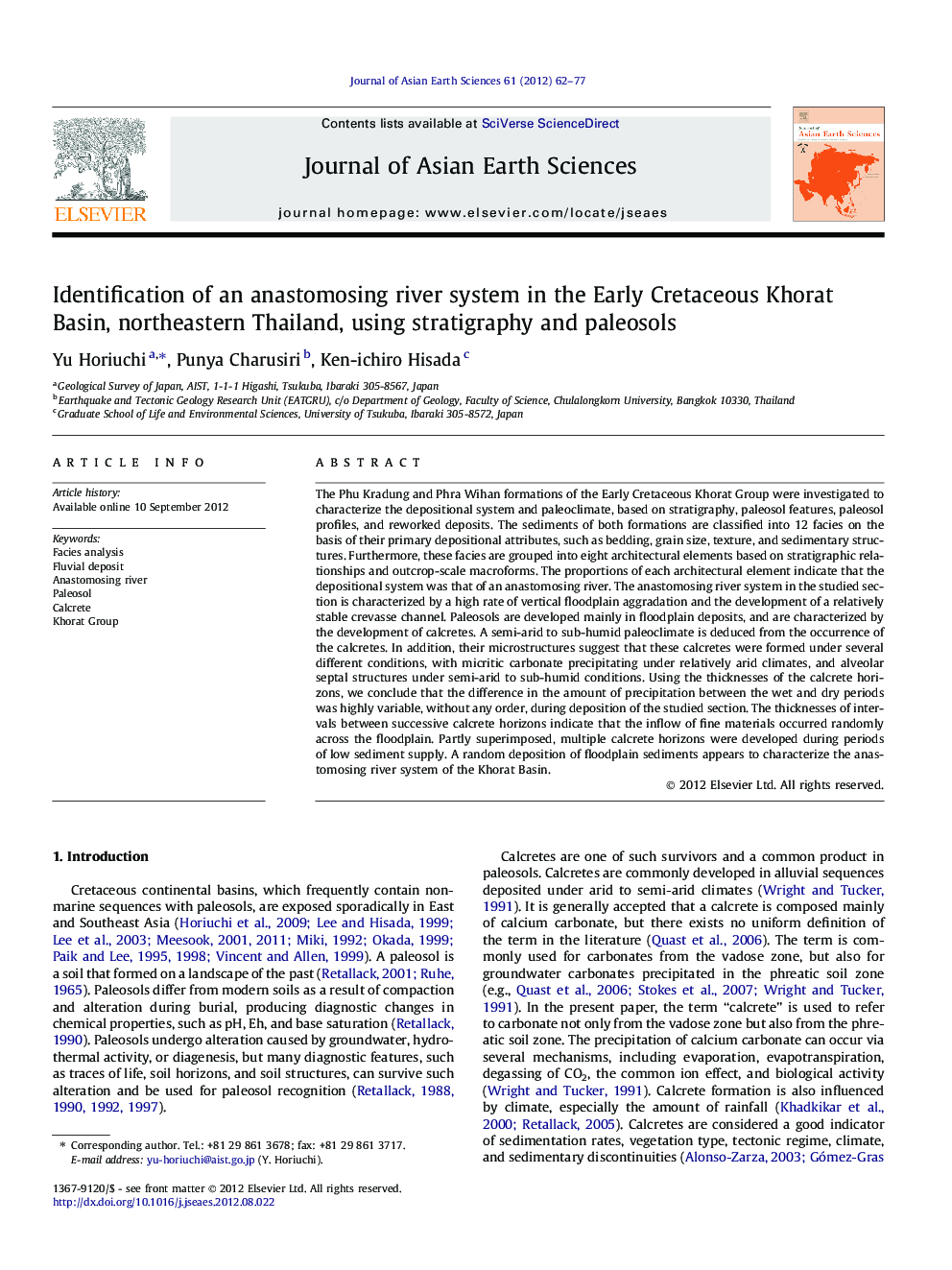| کد مقاله | کد نشریه | سال انتشار | مقاله انگلیسی | نسخه تمام متن |
|---|---|---|---|---|
| 4731147 | 1640404 | 2012 | 16 صفحه PDF | دانلود رایگان |

The Phu Kradung and Phra Wihan formations of the Early Cretaceous Khorat Group were investigated to characterize the depositional system and paleoclimate, based on stratigraphy, paleosol features, paleosol profiles, and reworked deposits. The sediments of both formations are classified into 12 facies on the basis of their primary depositional attributes, such as bedding, grain size, texture, and sedimentary structures. Furthermore, these facies are grouped into eight architectural elements based on stratigraphic relationships and outcrop-scale macroforms. The proportions of each architectural element indicate that the depositional system was that of an anastomosing river. The anastomosing river system in the studied section is characterized by a high rate of vertical floodplain aggradation and the development of a relatively stable crevasse channel. Paleosols are developed mainly in floodplain deposits, and are characterized by the development of calcretes. A semi-arid to sub-humid paleoclimate is deduced from the occurrence of the calcretes. In addition, their microstructures suggest that these calcretes were formed under several different conditions, with micritic carbonate precipitating under relatively arid climates, and alveolar septal structures under semi-arid to sub-humid conditions. Using the thicknesses of the calcrete horizons, we conclude that the difference in the amount of precipitation between the wet and dry periods was highly variable, without any order, during deposition of the studied section. The thicknesses of intervals between successive calcrete horizons indicate that the inflow of fine materials occurred randomly across the floodplain. Partly superimposed, multiple calcrete horizons were developed during periods of low sediment supply. A random deposition of floodplain sediments appears to characterize the anastomosing river system of the Khorat Basin.
► The depositional environment of the Early Cretaceous Khorat Group was an anastomosing river system.
► Paleosol profiles indicate random deposition across the floodplain of the Khorat Basin.
► The paleoclimate of the Khorat Basin was semi-arid to sub-humid, with wet and dry cycle.
Journal: Journal of Asian Earth Sciences - Volume 61, 15 November 2012, Pages 62–77